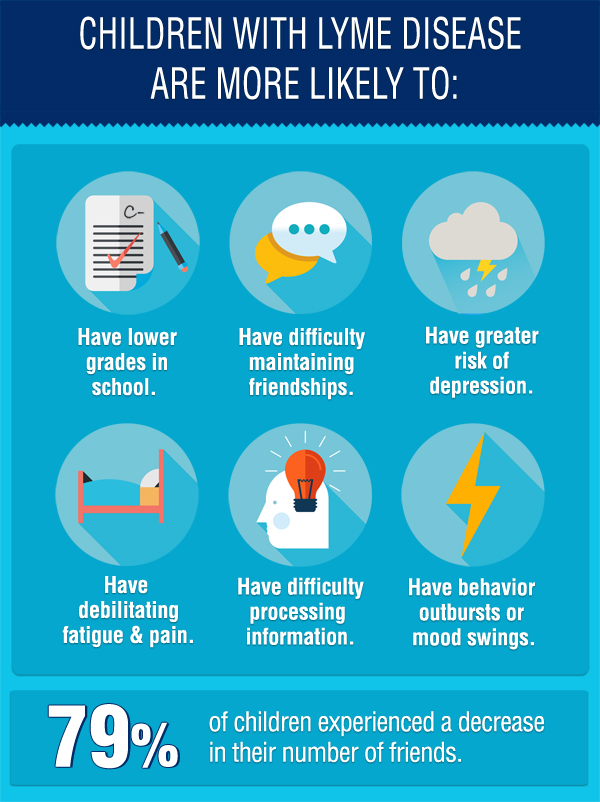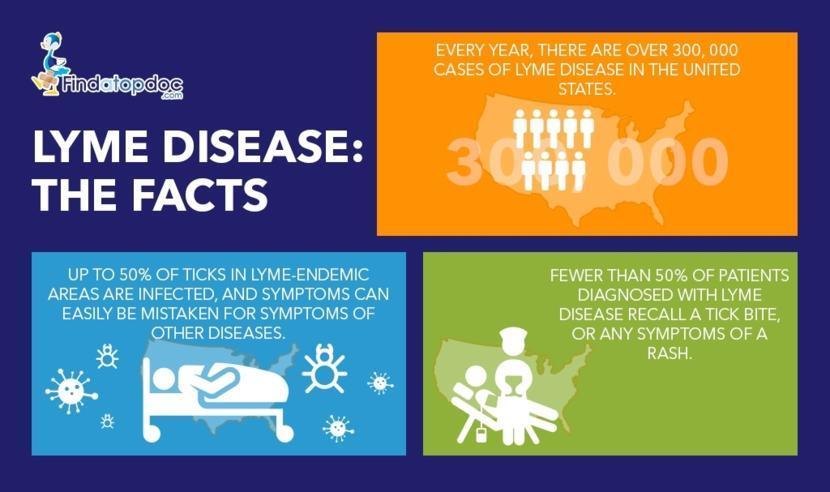Discover the subtle symptoms of Lyme disease that could be affecting you and how to take control of your health.
Table of Contents
- Introduction to Lyme Disease
- Recognizing Early Lyme Symptoms
- The Sneaky Culprits: Ticks
- Tick Bite Prevention Tips
- What to Do If Bitten By a Tick
- Visiting the Doctor: Getting Tested for Lyme
- Getting Better: Lyme Treatment Options
- Ongoing Battles: Chronic Lyme Management
-
Post-Lyme Care is just as important as the treatment itself. Once you finish your treatment for Lyme disease, there are still steps you can take to continue staying healthy and preventing future infections.
One key aspect of staying healthy after Lyme disease is making sure you don’t get infected again. There’s always a risk of getting Lyme disease from another tick bite, so it’s essential to continue checking for ticks regularly, especially after spending time outdoors.
Prevention is Key: Reviewing Key Tips
- Conclusion: Empowered Against Lyme
- FAQs
Introduction to Lyme Disease
In this section, you will learn about Lyme disease, a condition caused by tick bites, and why it’s crucial to recognize its symptoms early on.
What is Lyme Disease?
Lyme disease is an illness that you can get from the bite of a tiny insect called a tick. Ticks are known for hanging out in grassy areas or forests, waiting to attach themselves to animals or humans for a meal. When a tick bites you, it can pass on a bacteria that causes Lyme disease.
Why Detecting Lyme Early Matters
It’s really important to catch Lyme disease early because the sooner you start treatment, the better your chances are of getting rid of it completely. If you wait too long, it can make you really sick and cause problems that last a long time.
Recognizing Early Lyme Symptoms
When it comes to Lyme disease, there are some early warning signs that you should watch out for. One common symptom is a rash that may look like a bull’s-eye target. It doesn’t hurt, but it can appear on your skin after a tick bite. You might also feel like you have the flu with symptoms such as fever, headache, fatigue, and muscle aches. If you notice any of these, it’s important to tell an adult right away!
What to Do If You Have Symptoms
If you start feeling sick after spending time outdoors or notice a strange rash on your skin, don’t panic. The first thing you should do is tell a grown-up, like a parent or teacher, about how you feel. They can help you make an appointment to see a doctor. It’s essential to get checked out by a healthcare professional who can determine if your symptoms are from Lyme disease or something else. Remember, getting early treatment can help you feel better faster!
The Sneaky Culprits: Ticks
Have you ever wondered how Lyme disease is spread? Well, the answer lies in one of nature’s sneakiest culprits – ticks. These tiny creatures may look harmless, but they can carry bacteria that can make you sick. Let’s learn more about ticks and how to protect ourselves from them.

Image courtesy of via Google Images
How Ticks Cause Lyme Disease
Ticks are small insects that feed on the blood of animals and humans. When a tick bites someone who is infected with Lyme disease, it can pass that bacteria along to its next host. This is how Lyme disease spreads. Ticks can be found in grassy and wooded areas, so it’s important to be extra cautious when spending time outdoors.
Stopping Ticks in Their Tracks
So, how can we avoid getting bitten by these sneaky ticks? One way is to dress smart. If you’re going outside to play, make sure to wear long sleeves and tuck your pants into your socks. This makes it harder for ticks to find a cozy spot to latch onto. Another way to protect yourself is by using tick repellent. Bug sprays that contain DEET can help keep ticks away and reduce the risk of getting bitten.
Tick Bite Prevention Tips
When you’re out exploring nature or playing in the backyard, it’s important to protect yourself from tick bites. Ticks can carry Lyme disease, so it’s crucial to follow these tips to stay safe.
Dress Smart
One way to prevent tick bites is by dressing smart. Wear long sleeves and pants, and tuck your pants into your socks. This way, ticks will have a harder time reaching your skin. Light-colored clothing can also help you spot ticks more easily.
Use Tick Repellent
Tick repellents are like magic shields that keep ticks away. Ask an adult to help you apply bug spray with DEET before going outside. You can also treat your clothes with permethrin, a special insect repellent, for extra protection.
What to Do If Bitten By a Tick
If you find a tick on your skin, don’t panic! Ask an adult for help in removing it safely. You’ll need fine-tip tweezers to grab the tick as close to the skin as possible. Gently pull upward without twisting to ensure you remove the entire tick. Remember not to crush the tick and dispose of it in a sealed bag or container.

Image courtesy of via Google Images
After the Bite Care
After removing the tick, wash the bite area with soap and water. Keep an eye on the spot for any signs of Lyme disease, such as a rash or flu-like symptoms. If you experience any unusual changes at the bite site or in your health, let an adult know immediately so they can help you seek medical attention.
Visiting the Doctor: Getting Tested for Lyme
In case you start feeling unwell or notice any symptoms that seem like they could be Lyme disease, it’s important to talk to your doctor. When you visit the doctor with concerns about Lyme disease, here’s what to expect:
Talking to Your Doctor
When you see your doctor, make sure to tell them all your symptoms. Describe everything you are feeling, like tiredness, fever, muscle aches, or any rashes you might have noticed. This helps the doctor figure out if Lyme disease might be the cause. Be honest and don’t be afraid to ask questions!
The Lyme Disease Test
To check if you have Lyme disease, the doctor may need to do a simple blood test. This test looks for specific signs in your blood that could indicate the presence of the Lyme disease bacteria. It’s a quick and painless procedure that helps the doctor know for sure if you have Lyme disease.
Getting Better: Lyme Treatment Options
Dealing with Lyme disease involves getting the right treatment to help your body fight off the illness. If you’ve been diagnosed with Lyme disease, your doctor may prescribe antibiotics to help you get better.
| Early Signs of Lyme Disease | Care and Treatment |
|---|---|
| Flu-like symptoms such as fever, chills, fatigue, body aches | Consult a doctor for proper diagnosis and treatment |
| Red rash in a bull’s-eye pattern at the site of the tick bite | Take antibiotics as prescribed by a healthcare provider |
| Joint pain and swelling, particularly in the knees | Get plenty of rest and stay hydrated |
| Nausea, headache, and dizziness | Avoid further exposure to tick-infested areas |

Image courtesy of via Google Images
The Path to Recovery
Antibiotics are like superhero medicines that fight off the bad bacteria causing Lyme disease in your body. By taking these medicines exactly as your doctor tells you, you’re helping your body get rid of the infection.
Remember to always finish the full course of antibiotics, even if you start feeling better before you’ve taken them all. This ensures that all the bacteria causing Lyme disease are completely gone from your system.
While taking antibiotics, make sure to drink plenty of water and get lots of rest to help your body heal faster. Healthy foods and staying active also play a role in your recovery process, so listen to what your body needs to get better.
By following your doctor’s instructions and taking good care of yourself, you’ll be on the road to recovery from Lyme disease in no time!
Ongoing Battles: Chronic Lyme Management
Living with Chronic Lyme can be challenging, but with the right management strategies, it is possible to lead a fulfilling life. Chronic Lyme is when Lyme disease symptoms persist for an extended period, even after completing initial treatment.
Living With Chronic Lyme
People with Chronic Lyme often have to follow specific treatment plans that may include long-term antibiotic therapy or alternative treatments to manage their symptoms. They also need to ensure they maintain a healthy lifestyle to boost their immune system.
Post-Lyme Care is just as important as the treatment itself. Once you finish your treatment for Lyme disease, there are still steps you can take to continue staying healthy and preventing future infections.
One key aspect of staying healthy after Lyme disease is making sure you don’t get infected again. There’s always a risk of getting Lyme disease from another tick bite, so it’s essential to continue checking for ticks regularly, especially after spending time outdoors.
Prevention is Key: Reviewing Key Tips
In order to keep yourself safe from Lyme disease, it’s important to understand how to prevent tick bites. Here are some key tips to help you stay protected:

Image courtesy of via Google Images
Dress Smart
When you are going outside to play, make sure to wear long sleeves and pants. It’s also a good idea to tuck your pants into your socks to create a barrier that makes it harder for ticks to get onto your skin.
Use Tick Repellent
Tick repellent is a great tool to keep ticks away from you. Ask an adult to help you choose a bug spray that is safe for kids and can effectively repel ticks. Remember to follow the instructions carefully when applying the repellent.
Check Yourself After Being Outdoors
After you come back inside from playing in grassy or wooded areas, it’s important to check yourself for ticks. Look carefully at your clothes and skin, paying close attention to areas like behind your ears, in your hair, and between your toes where ticks like to hide.
By following these simple tips, you can reduce your risk of getting bitten by a tick and developing Lyme disease. Prevention is key, so remember to always stay vigilant when spending time outdoors!
Conclusion: Empowered Against Lyme
In this guide, we have learned about Lyme disease, its early symptoms, and how to prevent and manage it effectively. By being aware of the signs of Lyme disease and taking proactive steps to prevent tick bites, you can empower yourself against this illness.
Staying Vigilant for Early Signs
Remember, if you experience symptoms like a bullseye rash, fever, or fatigue after spending time outdoors, it’s essential to seek medical help promptly. Early detection is key to receiving the right treatment and recovering quickly.
Tick-Bite Prevention Is Critical
By dressing smartly when playing outside, using tick repellent, and checking your body for ticks regularly, you can significantly reduce your risk of getting Lyme disease. Take these simple steps to protect yourself from tick bites and stay healthy.
Empowering Yourself Through Knowledge
Knowledge is power when it comes to fighting Lyme disease. By educating yourself about the illness, its symptoms, and prevention methods, you can take control of your health and well-being. Be proactive and stay informed to stay safe.
Remember, you have the tools and information to empower yourself against Lyme disease. By recognizing early symptoms, preventing tick bites, and seeking proper medical care, you can take charge of your health and lead a happy, healthy life free from the impact of Lyme disease.
FAQs
In this section, we’ll answer some common questions you may have about Lyme disease.
Can I get Lyme disease more than once?
Yes, it is possible to get Lyme disease more than once. This happens when someone who has had Lyme disease in the past gets bitten by another infected tick. Even though your body may build some immunity after the first infection, it is still important to protect yourself from future tick bites.
Are all tick bites dangerous?
No, not all tick bites are dangerous. While it’s true that some ticks carry Lyme disease, not every tick bite will make you sick. Most of the time, when a tick bites you, it leaves a small red bump that may itch for a few days and then goes away. However, it’s essential to be cautious and take preventive measures to avoid tick bites whenever possible.





